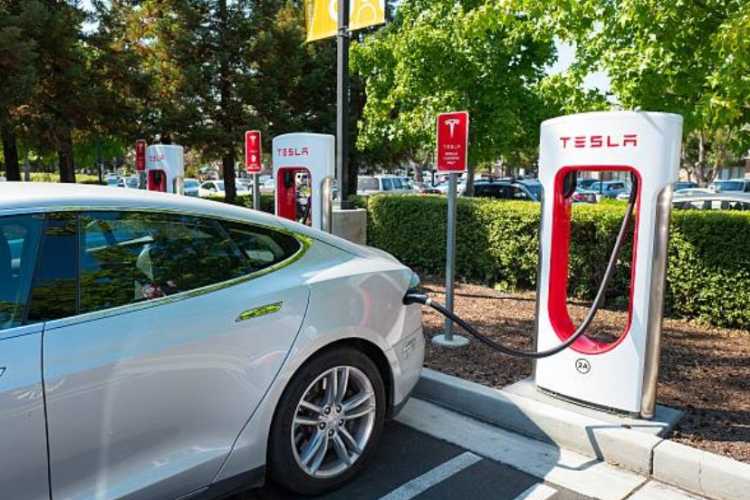
In a country where frugality governs consumer decisions, global electric vehicle giant Tesla is preparing to test its fortunes. Elon Musk’s Tesla is reportedly scouting land in Satara, Maharashtra, to set up a completely knocked down assembly unit. But the key question remains: can a luxury EV brand, with models priced upwards of Rs 50-60 lakh, carve out space in India’s ruthlessly price-sensitive market?
Industry analysts remain sceptical. While Tesla might attract a niche clientele in affluent metros, its high pricing and lack of localisation could limit its appeal in a market where cost, not brand cachet, is the ultimate decider.
READ | China’s rare earth curbs threaten India’s EV ambitions
A buzzworthy entry, but a tough road ahead
Tesla’s long-awaited India debut—expected by late 2025—has generated significant excitement. The company has secured showroom space in Mumbai and is negotiating land acquisition. It has also posted over two dozen job listings in India, signalling the firming up of its entry strategy.
However, the electric SUV segment Tesla hopes to dominate is getting crowded—and fast. Vietnamese automaker VinFast, backed by Vingroup, has already begun work on a car assembly plant in Tamil Nadu with a $2 billion commitment and $500 million in initial investment. VinFast’s presence is emblematic of a broader challenge. Tesla is now entering a market already buzzing with activity, where local and global players have a head start. Tesla had registered a local unit over four years ago, but prolonged delays mean the novelty factor may be fading.
Tesla’s India entry coincides with a period of intense competition and growth in the domestic EV market. Tata Motors remains the undisputed market leader with a 38% share. Its EV offerings cover a broad price range—from the Tiago EV (Rs 7.99–11.14 lakh), Punch EV (starting Rs 9.99 lakh), Nexon EV (Rs 12.49–17.19 lakh), to the premium Curvv EV (Rs 17.49–22.24 lakh).
JSW MG Motor India, the joint venture between MG and the JSW Group, holds 29% of the EV market. MG’s ZS EV (Rs18.98–25.20 lakh), Comet EV (Rs 6.98–9.86 lakh), and the recently launched Windsor Pro EV (Rs 17.49 lakh) are finding favour among price-sensitive urban buyers.
Mahindra & Mahindra commands a 16% share, and its offerings like the XUV.e9 (Rs 21.90–30.50 lakh), and BE.05 (Rs 18.90–26.90 lakh) have garnered strong early interest. M&M CEO Rajesh Jejurikar even threw a challenge to global players, stating, “Let Tesla or BYD launch something like this in India, but at these prices.”
Hyundai has established a premium EV presence with models like the Creta EV (Rs 17.99 lakh) and Ioniq 5 (Rs 46.05 lakh), while Maruti Suzuki, the country’s volume leader, is preparing to enter the fray with its eVX SUV (Rs 17–22.50 lakh, 500+ km range). EV sales in India touched nearly 1 lakh units in 2024, a 20% rise from 2023’s 82,688 units. Yet, EVs still make up just 3% of total vehicle sales—highlighting untapped potential.
Tesla’s luxury play: A risky proposition
Tesla aims to position itself in the luxury EV segment, with its initial offerings likely to be priced around Rs 50–55 lakh. This puts it in direct competition with ICE vehicles from BMW, Audi, and Mercedes-Benz—brands that already enjoy strong consumer trust, resale value, and expansive after-sales networks in India.
European automakers like BMW and Audi have been quietly building their electric portfolios in India. BMW’s i4 and iXmodels and Audi’s e-tron lineup are well-received among affluent Indian buyers. These brands benefit from years of brand loyalty and extensive dealership networks—something Tesla will have to build from scratch. The aspirational pull of Tesla is strong, but Indian luxury buyers remain value-conscious and demand high service reliability.
While the premiumisation trend and the rise of high-net-worth individuals offer Tesla a small but promising market, the challenge is to go beyond novelty. India’s wealthy are increasingly splurging on luxury goods—from designer clothing to high-end EVs—but they expect seamless support, localised features, and long-term value.
The Chinese are coming—fast and focused
Chinese EV makers, particularly BYD, are aggressively expanding in India. BYD’s Atto 3 (Rs 33.9–34.5 lakh) and e6 MPV (Rs 29.1 lakh) have already gained market traction. The company plans to launch more models in 2025. Other Chinese players like Great Wall Motors and Chery are exploring investments, though bilateral tensions may hinder public sentiment toward their products.
BYD has overtaken Tesla globally in both revenue and units sold, and its robust battery supply chains give it an edge in cost efficiency. As Tesla faces mounting pressure in the US and European markets—where it is losing share to BYD and other rivals—India represents both a challenge and an opportunity. A slip here would further deepen its global woes.
Policy shifts may help—but not enough
Tesla’s cost disadvantage is compounded by India’s steep import duties. Until its CKD facility is operational—expected to take 18 months—Tesla will face a 15% import duty on completely built units (CBUs), pushing prices even higher.
There may be some relief on the horizon. India and the US are engaged in trade talks that may reduce tariffs on EVs to 0–1%. The Indian government is also considering revisions to the Scheme to Promote Manufacturing of Electric Passenger Cars (SMEC), which could encourage local assembly. But the Centre remains cautious, balancing foreign investment with the need to nurture domestic manufacturers.
Tesla’s delayed entry into India means it has missed the early-mover advantage. It now enters a crowded field with fierce competition from local and regional players who understand the Indian consumer and operate at significantly lower price points. The luxury tag may help Tesla capture attention, but converting that into sustained sales in a value-driven market will require deeper localisation, strategic pricing, and a robust service ecosystem.
India offers a rare opportunity—a vast, underserved EV market that is only beginning to take off. But Tesla will need more than brand power to make an impact. Without a sharp, localised strategy, it risks becoming just another name in a market where familiarity, affordability, and functionality rule the road.
